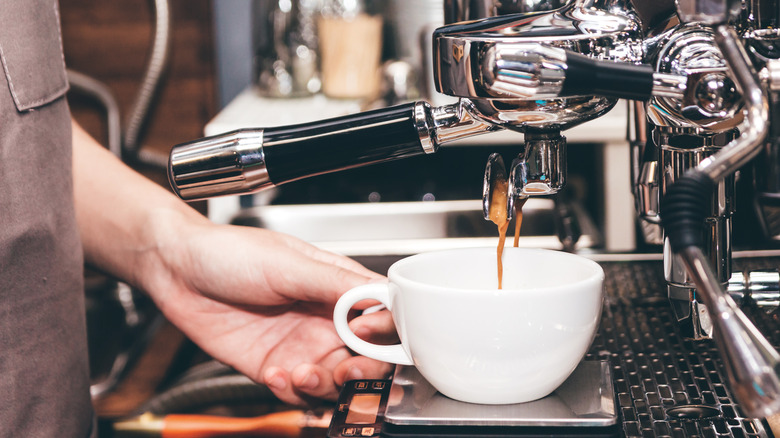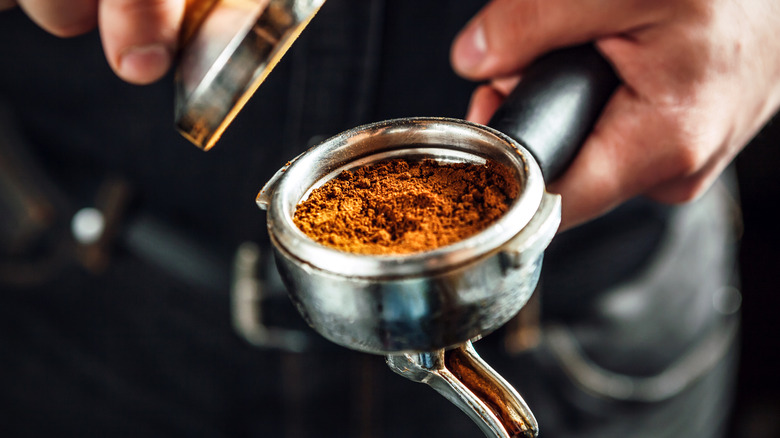How Angelo Moriondo Helped Craft Espresso As We Know It Today
Like pasta and pizza, espresso is one of things that Italy does best. With 93% of Italians choosing espresso over any other type of coffee (via Statista), it's fair to say that espresso is a huge part of the country's culture. Now as easy as the push of a button, making espresso was once a time-consuming venture — that is, until a Torinese inventor named Angelo Moriondo revolutionized the espresso-making process.
A thick, yet silky concentrated coffee, espresso can be used as a base for drinks like the latte, cappuccino, or americano, but it is best served as a shot. The preferred way for working Italians to enjoy their coffee, swiftly sipping a small cup of joe has roots especially in the bustling industrial cities of northern Italy. The home of big coffee brands like Lavazza and Caffe Vergnano, Turin was (and remains to be) a major coffee hub, according to Travel Well Magazine. It only makes sense then that one of the biggest developments in coffee-making would also take place in the city at the hands of a creative thinker with roots in the hospitality industry.
Brewing more coffee in less time
Conceived as a way to bulk brew coffee for customers and save time, Angelo Moriondo can be credited with creating the first mechanical espresso machine. Presenting his invention at the General Expo of Turin in 1884, Il Globo reports that it was awarded the bronze medal, before being patented as "new steam machinery for the economic and instantaneous confection of coffee beverage." Working alongside a mechanic, Moriondo was able to refine the design, which ultimately consisted of a large boiler that pushed heated water through a puck of coffee grounds into a second boiler that produced steam to finish the brewing process (via Atlas Obscura).
However, as Atlas Obscura notes, the inventor is often forgotten in history as he never began production of the invention on an industrial-scale. Instead, only a few hand-built machines were made, intended only to be used in his family's hotels and bars (via Il Globo). Thinking it would give him an advantage over competitors, Moriondo's tactic was successful, but not for long.
Smithsonian Magazine reports that Moriondo's design was eventually adapted by inventors like Luigi Bezzera, who revamped the machine, Desidiero Pavoni, who industrialized the product, and Francesco Illy, who substituted pressurized water for steam. The machine also inspired Alfonso Bialetti to develop a stovetop solution, known as the moka pot (Atlas Obscura).

